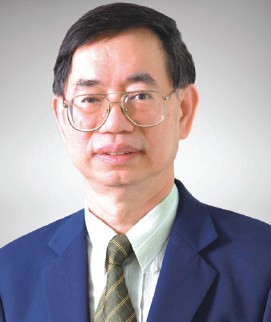Pivotal Role of Liquid Biopsy in Diagnosing, Managing and Monitoring Early and Advanced Stages of Lung Cancer among Asian Population
Main Article Content
Abstract
RATIONALE: Non-small cell lung cancer (NSCLC) remains the leading cause ofcancer-related deaths among Asian population. Liquid biopsy is a new technology thatprovides information on tumor gene profiling through examination of cell-free DNA(CfDNA) in whole blood. This produces data on genetic alterations found in tumortissue that could be used for prompt and effective management of NSCLC.
MATERIALS AND METHODS: Between September 2016 and December 2016, weretrospectively collected and reviewed the medical records of thirty-five patients whowere suspected or diagnosed of lung cancer, then underwent serum epidermal growthfactor receptor (EGFR) for further investigation. Liquid biopsy results were comparedwith the subjects’ final diagnosis.
RESULTS: The final diagnoses revealed eighteen (51%) benign and seventeen (49%)malignant cases. Fourteen out of seventeen malignant cases were diagnosed asadenocarcinoma. The remaining three out of seventeen subjects’ diagnoses were:anaplastic giant cell, carcinoid tumor and thyroid cancer with lung metastasis. Thesethree were considered as true negative for EGFR liquid biopsy results. The fourteenmalignant cases were divided into two categories which were surgical and chemotherapyor TKI groups. In the surgical group, five were positive for tissue EGFR mutationfollowed by a negative serum EGFR results post-surgery. One out of the five casesreported negative serum EGFR just four days post-operatively.In the chemotherapy or tyrosine kinase inhibitor (TKI) group, four out of nine weretested prior to treatment with three positive results. One was negative serum EGFR buthad positive tissue EGFR. One case out of nine reported positive EGFR followed by anegative EGFR at thirteen days while on treatment. The last four subjects were testedduring prolonged treatment. Two from the four cases reported negative results. Onedetected resistance and the last case was negative EGFR but later deteriorated.
CONCLUSION: Liquid biopsy’s roles include lung cancer screening, treatmentevaluation, assessment of recurrence or resistance, an alternative for tissue biopsy anda complementary blood test with radiographic imaging. This test substantially improvespatient care and outcomes at all stages of lung cancer.
Article Details
This is an open access article distributed under the terms of the Creative Commons Attribution Licence, which permits unrestricted use, distribution, and reproduction in any medium, provided the original work is properly cited.
References
2. Perez-Ramirez C, Canadas-Garre M, Robles AI, et al. Liquid biopsy in early stage lung cancer. Transl Lung Cancer Res 2016; 5(5):517-24
3. Siegel R, Ma J, Zou Z, et al. Cancer statistics, 2014. CA Cancer J Clin 2014;64(1):9-29.
4. Sholl LM, Aisner DL, Allen TC, et al. Liquid biopsy in lung cancer: A perspective from members of the pulmonary pathology society. Arch Pathol Lab Med 2016;140(8):825-9.
5. Mino-Kenudson M. Rebuttal from Dr. Mino-Kenudson. Transl Lung Cancer Res 2016;5(4):430-2
6. Zhang Z, Ramnath N, Nagrath S. Current status of CTCs as liquid biopsy in lung cancer and future directions. Front Oncol 2015;5:209.
7. Uramoto H, Tanaka F. Recurrence after surgery in patients with NSCLC. Transl Lung Cancer Res 2014;3(4):242-9
8. Al-Kattan K, Sepsas E, Fountain SW, et al. Disease recurrence after resection for stage I lung cancer. Eur J Cardiothorac Surg 1997;12(3):380-4.
9. Ilie M, Hofman P. Pros: Can tissue biopsy be replaced by liquid biopsy? Transl Lung Cancer Res 2016;5(4):420-3.
10. Zhang J, Fujimoto J, Zhang J, et al. Intratumor heterogeneity in localized lung adenocarcinomas delineated by multiregion. Science 2014;346(6206):256-9.
11. Stewart EL, Tan SZ, Liu G, et al. Known and putative mechanisms of resistance to EGFR targeted therapies in NSCLS patients with EGFR mutations- a review. Transl Lung Cancer Res 2015; 4(10):67-81.
12. Chen YM. Update of epidermal growth factor receptor-tyrosine kinase inhibitors in non-small-cell lung cancer. J Chin Med Assoc 2013;76:249-57.
13. Kris MG, Johnson BE, Kwiatkowski DJ, et al. Identification of driver mutations in tumor specimens from 1,000 patients with lung adenocarcinoma: The NCI’s Lung Cancer Mutation Consortium (LCMC). J Clin Oncol 2011;29(Suppl) abstract CRA7506.
14. Shiau CJ, Babwah JP, da Cunha Santos G, et al. Sample features associated with success rates in population-based EGFR mutation testing. J Thorac Oncol 2014;9(7):947-56.
15. Morgensztern D, Politi K, Herbst RS. EGFR Mutations in Non-Small-Cell Lung Cancer: Find, Divide, and Conquer. JAMA Oncol 2015;1(2):146-8.
16. Sequist LV, Bell DW, Lynch TJ, et al. Molecular predictors of response to epidermal growth factor receptor antagonists in non-small-cell lung cancer. J Clin Oncol 2007;25(5):587-95.
17. Ma C, Wei S, Song Y. T790 and acquired resistance of EGFR TKI: a literature review of clinical reports. J Thorac Dis 2011;3(1):10-8.
18. Wong SQ, Li J, Tan AY, et al. The CANCER 2015 Cohort. Sequence artefacts in a prospective series of for formalin-fixed tumours tested for mutations in hotspot regions by massively parallel sequencing. BMC Med Genomics 2014;7:23.


